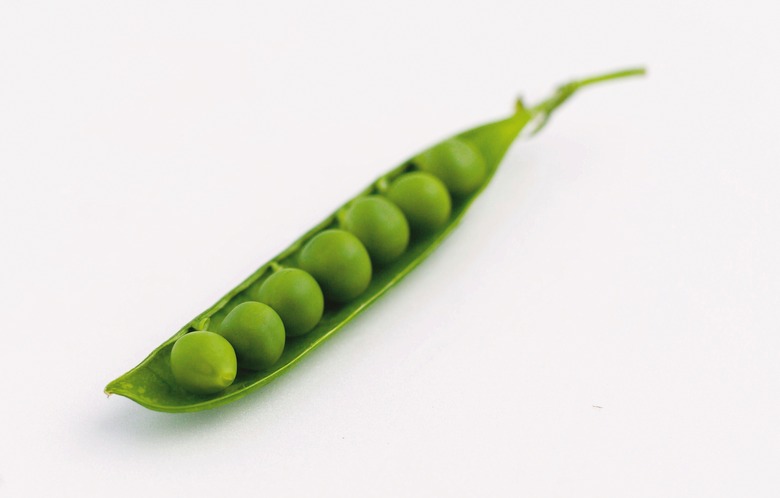Does Frost Damage Pea Plants?
Peas are frost-hardy, cool-season vegetables that can be grown in areas where there is a long, cool growing season. Peas can be classified as garden peas, snap peas or snow peas. Since peas are a cool-season vegetable, they will be fine if exposed to a light frost, although a hard frost may damage the blossoms.
Step 1
Peas have excellent frost tolerance because the plant's growing points remain underground during the seedling stage, between the seed and the soil surface. If one of the growing points is killed by frost, the plant's nodes become active and will send a new shoot to the soil surface. The pea plant will mature later than it would have if its main shoot hadn't been killed, but it will not die.
Temperature
Step 1
Young pea plants will grow at any temperature above 40 degrees Fahrenheit. Ideal temperatures for growth fall between 55 and 65 degrees Fahrenheit. Purdue University notes that peas can withstand very cool temperatures as cool-season plants. They can tolerate temperatures to 28 degrees Fahrenheit in the seedling stage, for instance, although above-ground growth may be affected at temperatures below 21 degrees Fahrenheit. Very hardy varieties of peas can survive temperatures as low as 14 degrees Fahrenheit with snow cover protection. As a cool-season plant, peas are actually damaged more by high temperatures than by cooler temperatures.
Step 2
- Peas have excellent frost tolerance because the plant's growing points remain underground during the seedling stage, between the seed and the soil surface.
- Very hardy varieties of peas can survive temperatures as low as 14 degrees Fahrenheit with snow cover protection.
Blossom Damage
Step 1
While the pea plant can survive cool temperatures, the blossoms and pods of the pea plant may be damaged by late spring frost. Once the plants have begun to flower and produce fruit, they are vulnerable. Watch the weather forecast, and take care to protect the plants if frost is predicted. Planting your pea plants late enough in the season will help prevent this. Depending on the variety, plant peas 70 to 90 days before the date of the average earliest hard frost for your area. This should prevent plants from blooming while there is still the possibility of a hard frost.
Protection
Step 1
Should a frost be predicted after your pea plants have blossomed, take care to protect the plants from the frost. Shelter the pea plants with sheets or some other covering. A cold frame or hoop greenhouse with a plastic roof will protect the plants during a hard frost if necessary.
Step 2
- While the pea plant can survive cool temperatures, the blossoms and pods of the pea plant may be damaged by late spring frost.
- A cold frame or hoop greenhouse with a plastic roof will protect the plants during a hard frost if necessary.
References
- Plant Answers: English Peas and Sugar Snaps
- University of Minnesota Extension; Growing Peas in Minnesota Home Gardens; Cindy Tong, et al.
- Clemson Cooperative University; Garden Peas; Frances R. Knight, et al.
- Purdue University; Pea; F.J. Muehlbauer, et al.
- Colorado State University Cooperative Extension; Everyone Should Be Growing Peas; Megan Gross
